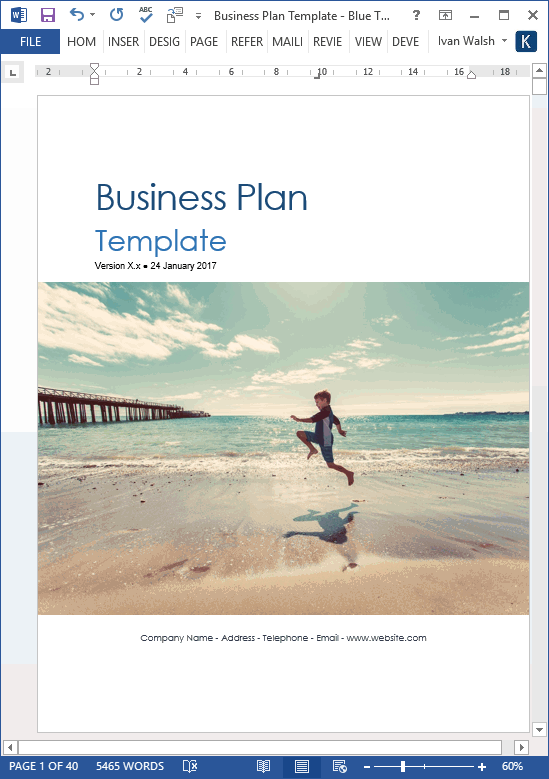Business Plan Templates
9 Writing Tips From Warren Buffett
Warren Buffet’s Annual Reports were the first I ever read.
To this day, I go back and re-read them to remind myself what business writing is really about – making a connection with words. That’s it. The more you can connect, the more people will read you. They may not agree with you – more on that later – but they will read what you have to say.
[Learn more about these Business Plan templates here]
‘Price is what you pay. Value is what you get.’ Warren Buffett
Warren Buffett is from Omaha. Not sophisticated LA or cosmopolitan New York. Saying their simple folk is a bit patronizing. Rather they saw things as they see them. His Annual Reports are a joy to read. Most mainstream annual reports are like sedatives. You read a page or two and then zzzz.
Warren Buffett’s Nine Steps To Effective Business English
What’s this got to do with business writing?
Well, if customers don’t understand what you’re selling, they won’t buy. If employees don’t understand your principles, they won’t follow. If you don’t understand your own vision, you can’t lead.
Writing is a process of clarification. We edit to make things clearer. Let’s start at the top.
- Customer Focus – it sounds obvious but… write the letter so that it addresses ‘their’ needs, not yours. It’s easy to get caught up when under pressure to sell or promote your ideas but, step back, and look at this letter from the customer’s perspective. Put yourself in their shoes. What’s their impression of your letter?
- Facts – likewise, stick to what you know. Don’t make up facts, figures, amounts, dates or other numbers to impress the reader. You’ll look very foolish when these are seen as ‘mis-informaton’. We all know what that word really means? Avoid saying, “I feel that”. Rather use “I believe that” or “I think that” and then explain why you believe this to be true.
- Include Technical and Legal Document As Attachments – if you need to refer to technical documentation or other such material, don’t insert it in the document, rather cross-reference in the Appendix. For printed material, print out the material and include it in a binder. This also applies to sales collateral, such as case studies and white papers.
- Jargon – write in a professional tone, avoiding slang, jargon and acronyms. Few things annoy me more than unexplained acronyms appearing in the middle of a case study. Am I supposed to know what this means? If I don’t, I feel a bit stupid. Is that what the writer meant?
- One Page Max – train yourself to keep business communication under one page. You can do this by compressing the main points together and using lists to break out the key points. If the document needs to be more than a page, then consider calling the person or arranging a meeting. Also, if it’s more than a page, it’s unlikely that the customer, employee, or colleague will respond to all the points.
- Proof the letter – for business critical information pay special attention to the financial data. You can be forgiven for the occasional grammar or spelling mistake, but you won’t be forgiven if the numbers are wrong. Check these more than once. Where possible, get a colleague to check them also.
- See The Big Picture – have the overview in mind before you start. Don’t start writing your next business plan when it’s still half cooked in your brain. Think it through first and then start writing.
- Short Words – don’t write ‘utilize’ when ‘use’ will do. Don’t procure meat products when you mean get a sandwich. Use simple everyday words. There are no Nobel prizes for emails. Use direct, immediate language that describes the main topic. If you go over a page, the reader may leave it to later… and never get to read it. So, if shorter letters have a better chance of getting read, then use this approach.
- Structure Your Letter – Before writing your business letter, make a list of the key points you need to cover. Prioritize them. For example, as prospective clients are more likely to read the first two or three bullet points, highlight these to convey their importance. Then work through the other points.
Conclusion
What I’ve learned from Buffett is that annual reports, proposals and other business documents can be written is a simple, easy-to-read format. They don’t have (and shouldn’t) intimidate the reader. Or bore them.
The next time your boss says the Annual Report needs to be more ‘serious’ and more professional, hand them a copy of Buffett’s letter and see what they think.
PS: The Business Plan Template is here.

